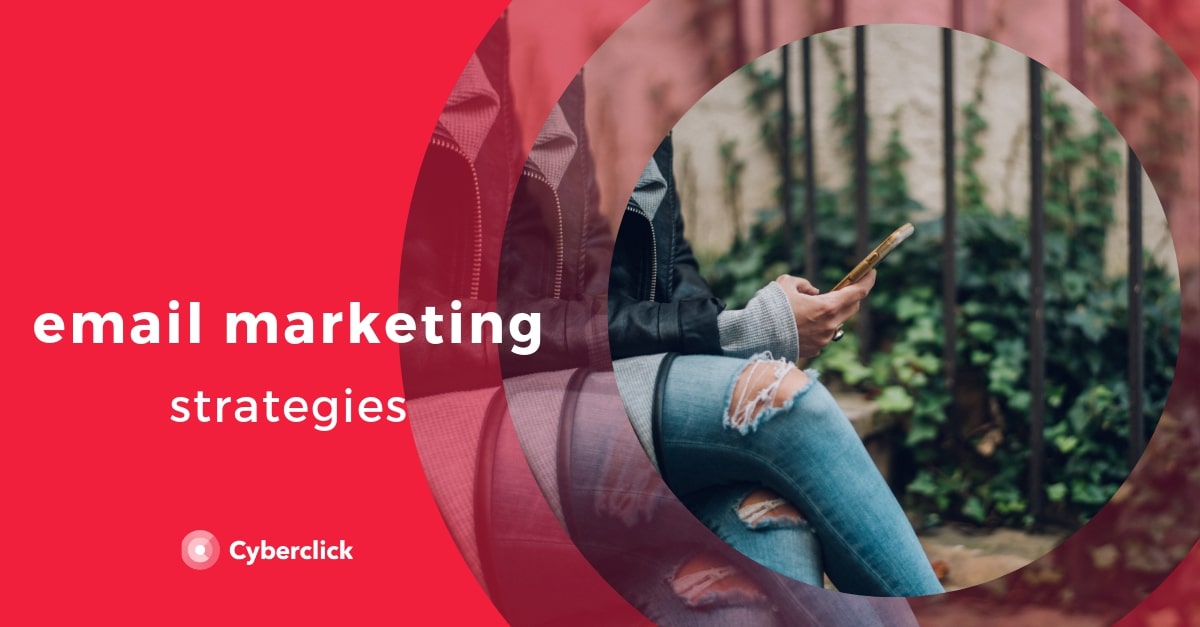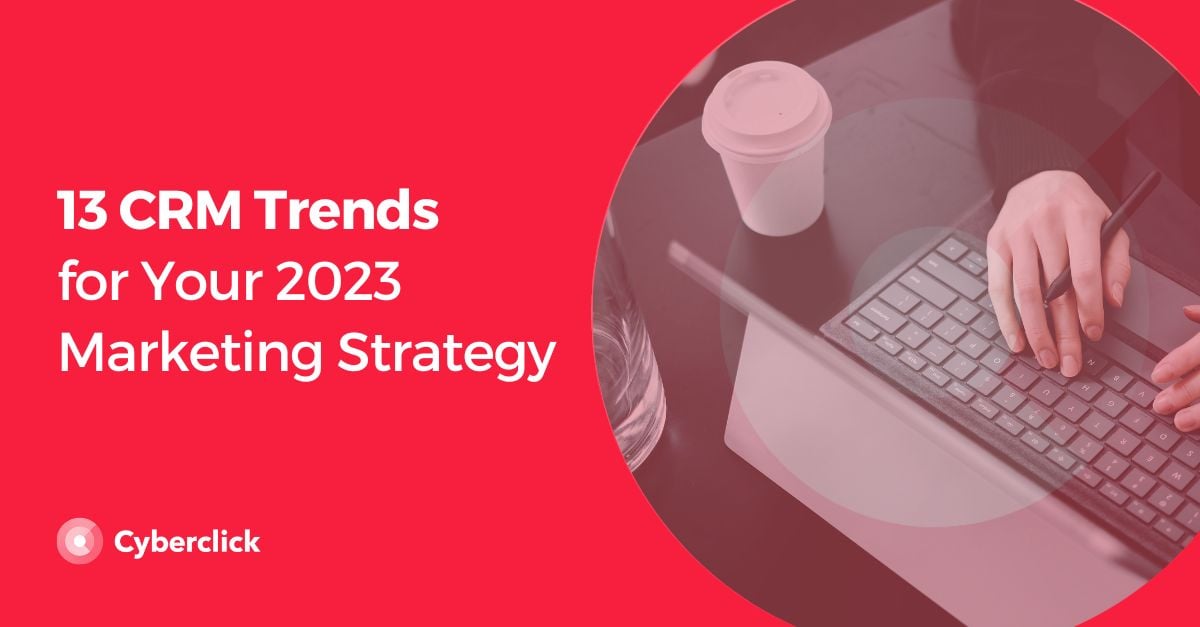Did you know that getting a new customer can cost up to seven times more than to keep one you already have? You have to devote part of your marketing resources to new consumers to your brand, but also part of the efforts have to focus on loyalty and enhance customer engagement and events. An effective tool is regularly contacting them via email. Sending promotions, discounts, commenting on the latest developments, offering entertainment or informational content, inviting you to download the application of the mark or simply to congratulate you on your anniversary. If you know how to do it properly, avoiding becoming a spammer, you can improve the commitment of your followers and encourage future sales. Here I will teach you five recommendations to develop effective email marketing campaigns and seduce your customers.

1) Enrich your email list
Do you think that it is enough to have a list of email addresses? In order to create effective email marketing campaigns you need to collect all possible information from the people behind these emails. You can, once you have obtained all the information possible, organize it according to demographic data (age and gender) in behavioral data (what pages or products typically consume or abandon products in the basket) and purchase data (what they purchased, how often they eat or how much they spend).
2) Segment depending on the engagement
By now you know that any campaign without segmenting cannot offer good results. In fact, it is a bit like throwing coins into the air and waiting to see what is going to fall. In the case that concerns us, for effective email marketing campaigns we will need to know whom the people are on our list of contacts that we are involved with.
Ordering the contacts that have been active with our company according to the time factor can easily do this. For example, those who have interacted in the past three months are very involved with your brand, those who have done so in a time ranging from 3 to 9 months are halfway active and those whose last activity was conducted during the last 9 to 18 months are those who are less involved and they can more easily forget about your company.
The latter you'll win back through a special loyalty campaign, since this is exactly the goal of this step: to know what users are more or less involved with your project to launch customized and targeted campaigns to increase engagement.
Reminder:
-
Up to 3 months from the last activity: Very involved.
-
In 3-9 months after the last activity: Moderately involved.
-
From 9-18 months since the last activity: Little or no involvement. Needed for specific strategies for re-engagement.
3) Personalize your email marketing campaigns
This step is the most important when it comes to seducing customers through email marketing campaigns. We all like that they treat each person differently. Each person we write to, even if it is a company, knows whom we are talking to. We do not want anyone to feel like a target or a simple thing without much value. Therefore, when designing our email marketing campaigns we go for customization.
But how do you individualize a campaign? First, use the name of your recipient to direct the message only to him with your email. You can add on more content or a subject. Another interesting way to customize the content of an email is using dates. For example, if you know when the birthday of your recipient is, send an offer for that day or praise him. A third option is to develop information using data from your contacts: their tastes, their needs, their concerns and their buying patterns.
Remember, there are three basic ways to customize email:
-
Use the name of your recipient
-
Use key dates
-
Use the data you have on your recipient (whatever their type)
4) Make your emails fun
Generally, users prefer to read content that is entertaining, fun and with a touch of humor rather than those that are purely informational. This fact can be used to your advantage to make email marketing campaigns to seduce your customers, but not all companies depending on the activity they are engaged in, or of his own philosophy, feel comfortable using this fun factor, which is something that would be dispensable if it is highly recommended.
If is not your case, and you really want to tap into the potential of this strategy, you can start including a photo or funny message. If you wish, you can also try with contests, competitions or sweepstakes. Such resources involve a lot of the users and help us find a connection through which to establish a stronger relationship.
5) Recapture your most elusive customers
There are people who directly do not see your emails, even the ones who open them. As soon as detected, they send them to the recycle bin and at this point, our only chance is taking us to three key issues: who is the sender of the email, the subject line and the pre-visualization of the content. Before sending an email to the trash, you see these three parts of the same and that is where you have to put all your effort. This is the only opportunity you have to grab attention and also the available space leaves you with very little leeway.
Once you've finally caught the attention of the consumer, which is in the content it should be simple and attractive. It is useful to offer something of great value to stay in the subscription list.
Also a brief (very brief) survey to understand why these customers are no longer involved with the company, so that the following e-mails you send them are highly customized and tailored to their needs, which will work in favor of engagement of this elusive customer and subsequent win back.
In summary ...
-
Step 1: Enrich your email list. Add all the information you can.
-
Step 2: Segment your list of having as a measurement tool engagement contacts.
-
Step 3: Customize your mail using the recipient's name, key dates and information about their tastes and preferences.
-
Step 4: Enter in your email marketing campaigns mood factor whenever possible and agree with the policy and activity of your company.
-
Step 5: Recapture users who are no longer involved and are more elusive.
With these tips properly launched, it is impossible that the results you get in your next email marketing campaigns are not positively increased, so we recommend that you implement them as soon as possible and, above all, we encourage you to give us your feedback.
Already implemented any of these steps? Do you think that these recommendations will help you improve your email marketing campaigns?
5 important email marketing statistics for your marketing strategy
1) 63% of users use their smartphones to check their personal emails
And 45% of people even use them to check their work related emails.
The conclusion here is clear: the intense popularity of mobile devices has revived and ignited email marketing more than ever, but, in order to make the most of it, you need to make sure your emails are perfectly viewable on these devices. Invest in a 100% responsive design, use short titles and guarantee visibility with bright colors and large buttons.
2) Users only open 23% of their personal emails
In terms of work emails, even less: only 19% actually get opened.
What can you do to avoid this drastic fate? The first key is your email's’ subject. Make the user an offer they simply cannot refuse. Personalization is also very important here, in order to send the right message to each user. Last of all, be sure to pay attention when choosing the day and time when to send your email, to maximize the probability of your audience paying attention to you.
3) 58% of users acknowledge that email marketing is their favorite way to keep in touch with brands
This number is higher than other methods such as apps or even social media, which are considered to be more disruptive. The best option is, without a doubt, to use a variety of methods to reach out to your audience, but make sure your message arrives at each users via the right channel.
4) But 47% also said that promotional emails bore them
Email marketing is a tool you simply cannot leave out. But from in between the avalanche of messages that we receive in our inboxes every day, you need to find a way to stand out and generate interest rather than yawns. In order to do this, opt for short emails, with an attractive headline and design. Use A/B tests to see which variables work best and, over all, don't abuse your subscribers’ patience by sending them emails too often.
5) People spend an average of 4.1 hours per day on their work email
Yes, you read that right: more than half of our work days come down to staring at our inboxes. If your brand is part of the B2B sector, it is a golden opportunity to connect with your potential clients.
4 email marketing strategies to keep in mind
1# SMART objectives and a contact strategy
It is worth going back to the basics to establish SMART objectives. Email marketing is one of the techniques used by marketers when they need to increase sales and conversions.
To arrive first in a race, it is not only important to go fast, but even more so to know where you are going. And as marketing professionals, we should know to take our time to properly define each email’s goals. This is where the SMART technique comes in:
-
Specific
-
Measurable
-
Achievable
-
Realistic
-
Timed
SMART goals let us define clear KPIs, the contact strategies for each campaign or programmed email, and the frequency with which emails are sent to subscribers or database contacts, and regarding which events.
2# The 3 Vs to get email registrations
There are many techniques to grow your subscriber database, and it is essential to make the most of your own channels as well as obtain new email address thanks to new registrations.
-
Visibility. It may seem obvious, but be absolutely sure that is as easy as possible to subscribe, and that your CTAs are self-explanatory. Some of the best places are on the home page, the product or destination pages, on social media profiles confirmation or transaction pages, transactional emails, among others.
-
Value. Why should people subscribe? List the benefits in your emails.
-
Velocity. Make registration something quick, that takes close to no time at all. Use a simple form where the person leaves their email and can access what they want with just one click. Avoid having a button that redirects to a landing page, where users can subscribe, as you will be complicating the process and risk losing potential contacts along the way.
3# Identify the right metrics
If your goals are clear, then these should reveal the best metrics to track. Email marketing metrics can be divided into two groups: process metrics, and results metrics.
-
Process Metrics. These metrics indicate trends over time, but do not necessarily indicate whether or not a campaign was successful on their own. Some examples are:
-
Accepted Rate. The percentage of sent emails that were actually delivered.
-
Bounce Rate. Percentage of emails that were not delivered.
-
Open Rate. Percentage of emails that were opened.
-
Click-through Rate (CTR). The percentage of recipients who clicked on any of the links inside the email.
-
Click-to-open rate (CTOR). The percentage of recipients who clicked on a link in the email divided by the number of emails opened, and multiplied by 100. This allows us to track the quality of the content, as well as the levels of engagement.
-
-
Results metrics. Measure a company’s or brand’s goals, and are a more adequate of an email marketing campaign’s success. For example:
-
New subscribers or registration rates.
-
Conversion Rates. The percentage of recipients who register by following the email’s instructions or goals.
-
An email’s value. An email’s average worth. This KPI is used to determine how much money one is willing to invest in obtaining one new user.
-
Cost of acquisition. The average cost per registration or client.
-
Return per email. Income per campaign divided by the number of delivered, opened or clicked emails.
-
Return per client. The average income generated by all the members of a database, or by those who convert.
-
Average lifetime. The money spent by a subscriber over their lifetime in your contact database.
-
4# The 3 Vs of unsubscribing
The 3 Vs apply not only to acquiring registrations, but to subscription cancellations as well.
-
Visibility. Don’t make the font invisibly small. Make the option visible for users to be able to unsubscribe easily.
-
Value. Offer people who want to unsubscribe an easy way to change their preference settings. This will allow them to change their registration email, change the frequency with which they receive emails or their content preferences. Let them update their data quickly and effortlessly. You can also offer them the option to have you contact them through other formats, such as SMS or post.
-
Velocity. Again, it is important to make this process quick. Make sure it is adapted for mobile devices, without having to login or wait for weeks.
What else? There are many more bases to cover that could take up many more articles such as this one. But I find that these 4 ideas sum up the most important things for us marketers to keep in mind when developing an email marketing campaign or programming an email.
9 keys to a successful email marketing campaign
We all know that email marketing campaigns have come back and are here to stay and that they are a powerful tool within the direct marketing strategies. It’s a simple and effective way to reach potential clients. Not only do we reach their inboxes, but also the actual hands of the consumer. We live in a mobile world, in which users have their emails configured on their mobile devices. Thanks to this, email marketing has been reborn, stronger than ever.
Remember! Sending an email is reaching out directly to your target’s smartphone. In case you’re not yet convinced, just know that in Spain, 75% of society has a smartphone with Internet connection, as well as 68% of people in the UK, 57% in the US, 53% in Italy, 50% in Germany and 49% in France.
1# Segment your audience
This may sound repetitive, even we have used this phrase countless times in our Numerical Blog’s articles, but it is totally true. If you want to be successful with email marketing, and don’t want to watch your budget wash away in a sea of useless “send”’s, start by segmenting your audience according to the service or product you are trying to promote. Ask yourself:
- What countries or regions are more prone to your product/service?
- What age range should you be aiming for?
- What are your target audience’s preferences? This can help you a lot when it comes to choosing databases.
- What is your target’s family or work situation?
- What purchasing power do they have?
There are many other questions you can ask, but these are the essential few that will help you get on the right track.
2# Copy, with the power of persuasion
Get your whole creative team together and lock yourself in a meeting room for a serious brainstorming session. It just one sentence you should be able to summarize the message of what you are trying to sell. No one knows better than you and your team, what values and characteristics of your product or service standout. Make a list of the most important ones, brainstorm some ideas and get everyone to improve it in a chain, until the best Copy is born.
Here are a few more tips so you know what works:
- Immediacy wins the race. Use words that refer to the now, the present. Incentive your consumers to consume your product quickly, with a time-limited offer, for example.
- Percentages sell more. When you publish your promotion, use percentages instead of absolute numbers. These types of email marketing campaigns have a greater conversion rate. I.e.: Try “50% off sunglasses” instead of “Get 50€ off your new sunglasses”.
- Novelty attracts. Whenever you can, make sure to highlight that your product is “new” in your copies. Consumers love this. Even though the search for outlets and second hand products grows stronger everyday, leave that for those who specialize in it.
- Don’t overuse your CAPSLOCK. They aren’t pleasant to look at and can convey aggressiveness, as they’re associated to loud speaking and negativeness.
3# Image is key
We are visual beings. The saying “a picture is worth a thousand words” says it all. The success of Instagram is the perfect example, where perfect pictures are the star of the show.
Take great care of the image that is directly related to the copy/message that you’ve created for your email marketing campaign.
Don’t design it yourself, leave the creativity to a professional. If you have one within your company, great, if not, hire an agency or a freelancer to help you with this task.
Furthermore, I’d advise you not to design just one image, but have a couple more up your sleeve, in order to send a few test-runs at the beginning of your campaign with the different images: A/B testing. Like this you will be able to find out which image gets more conversions, and that will be the one to use in the big send-outs.
Read up on more important information on this post - Perfect images for Instagram: 5 Tricks. Although these tips are custom made for a specific social network, the key elements are applicable to any situation in which you want to captivate your audience’s attention through imagery.
4# The Budget
Another key that is often repeated when it comes to designing any direct marketing strategy is the budget. Make sure you have it chrystal clear, not only how much you want to invest but also how you are going to distribute it amongst the databases. If you feel a bit lost in this area, you can always get the help of an expert.
5# Objectives and KPI’s
What are your trying to achieve? How do you know if you’re on the right path? First of all define the goals you want to achieve and that you feel will make your email marketing campaign successful: number of visits, obtained leads, purchases, number of emails opened, etc.
Then you will have to nail down the KPI’s or metrics that will help you know if you are on the right path.
6# Which databases are ideal?
This task is hard work, and it can take a while to figure out which databases are the most adequate for your campaign. It all depends on the target you’ve defined and that budget you have to work with. It can get even more complicated if your planning on targeting different countries, and if you get to finding yourself overwhelmed with this task, it’s advisable to get a marketing or online advertising agency to help you in this oh-so-important step of the process.
If you are using one of your own contact databases for your campaign, then youre in luck, as you have part of the work already done and save time.
7# Don’t let your emails be considered SPAM
Caution! Email servers have very tough protection filters and are very picky. One of the trickiest ones when sending emails in mas is Google’s, due to the enormous amount of existing Gmail accounts throughout the world.
There are however, always tricks you can use so that you’re emails aren’t considered spam:
- Avoid using the words “prize”, “offer” or “discount in the subject. Many users will report emails that have subjects like this as spam, and antispam filters take it into consideration also.
- Don’t create infinitely long emails. Emails sent between users are short, and don’t contain great lengths of text. If your message is too long and goes on paragraph after paragraph, it is much more likely users will send it straight to “Junk Mail”.
- Create your images like a puzzle. If your image is quite big, we recommend you split it up into smaller visual items, that blend together forming a single one, like a puzzle. Images that are too big can be considered spam.
8# Plan what days to send on
If you want your email marketing campaign to have a large number of sent emails, it’s advisable to spread out the final number, and send out different ones on different days.
Check out this post for the best days for your email marketing campaigns.
9# Analyze the metrics and take conclusions
To finish off, analyze the metrics and once you have the data, take conclusions. Was it a successful campaign? We hope so! Don’t forget to share your experience and success with us.
Responsable de la estrategia de contenidos y visibilidad en Cyberclick, con enfoque Allbound y especialización en posicionamiento SEO, GEO y automatización con IA. Gestión avanzada del CRM con HubSpot: base de datos, workflows, lead nurturing, scoring y reporting. Experiencia en marketing digital, comunicación corporativa y periodismo, uniendo estrategia, creatividad y tecnología para captar y convertir leads cualificados.
Responsible for content and brand visibility strategy at Cyberclick, with an Allbound approach and specialization in SEO, GEO (Generative Engine Optimization), and AI-powered automation. Advanced HubSpot CRM management: database segmentation, workflows, lead nurturing, scoring, and reporting. Background in digital marketing, corporate communications, and journalism—combining strategy, creativity, and technology to attract and convert qualified leads.







Leave your comment and join the conversation